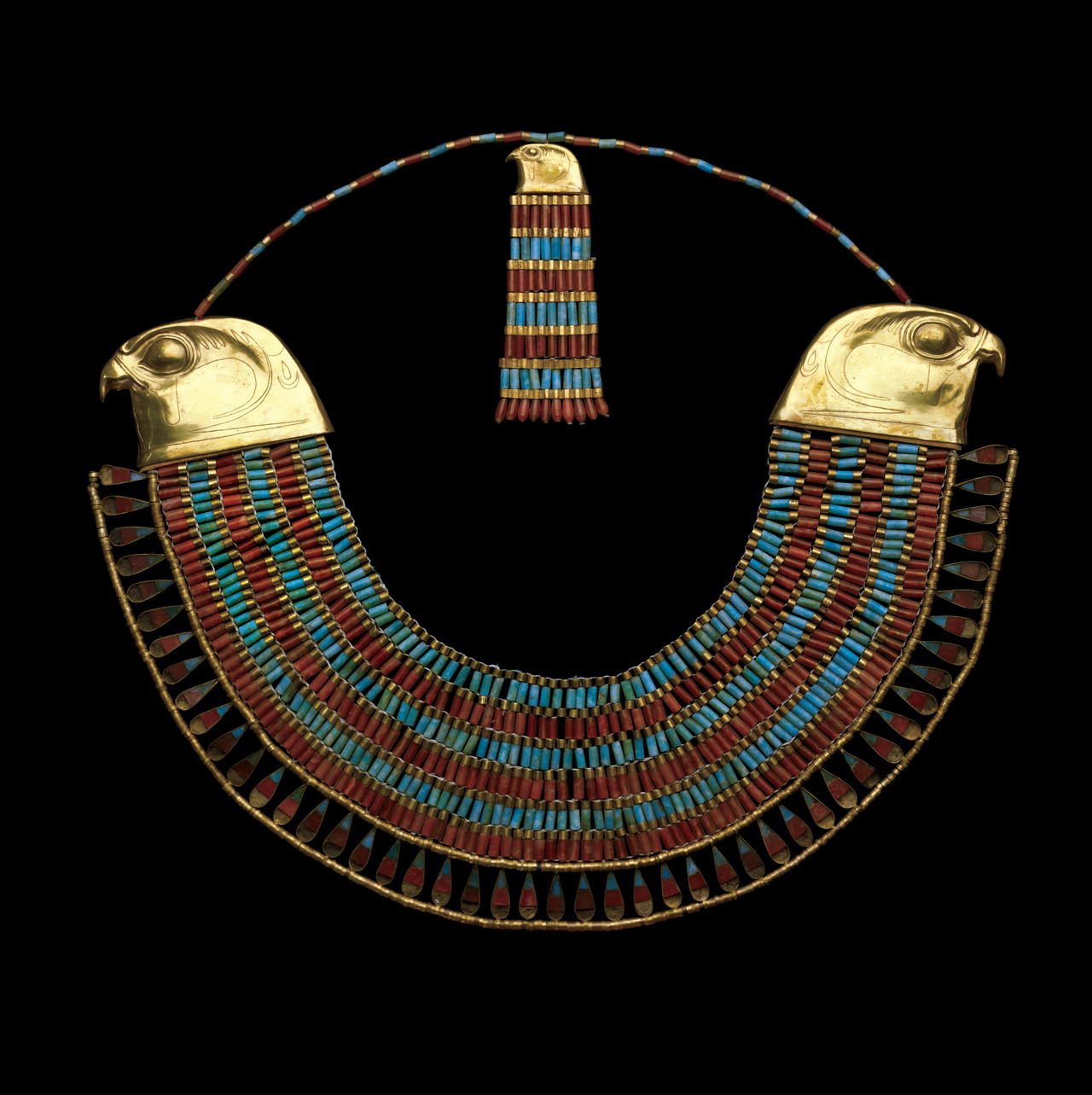This ear ornament of King Seti II was found in 1908 with other artefacts belonging to the king and to Queen Tausert in a hiding place in the Valley of the Kings.
It is composed of a flat trapezoidal centrepiece from which hang seven pendants in the form of cornflowers. At the end of the upper hollow tube of the earring, which is meant to keep a wig in place, there is a concave corolla of eight petals on one side and a stud on the other.














